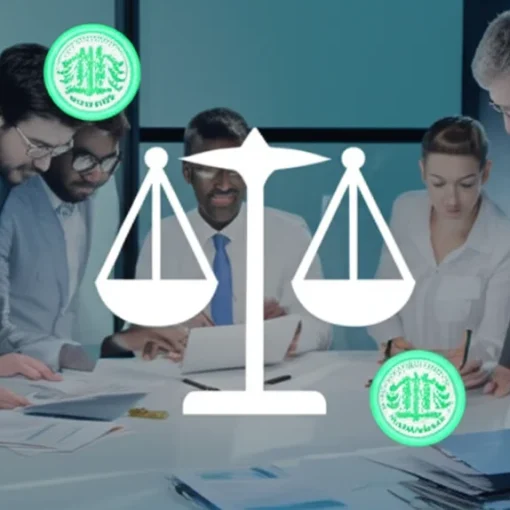Imagine this: You’ve identified the perfect parcel in a burgeoning Wisconsin city – a prime location, accessible, with the potential for substantial commercial upside. The price is right, maybe even a steal. But there’s a catch, a whisper of its industrial past: it’s a brownfield site. Your initial excitement quickly tangles with a knot of apprehension. What hidden environmental liabilities lurk beneath the surface? How will this impact your project’s budget, timeline, and ultimately, your company’s future? This isn’t just a hypothetical scenario; it’s a critical business risk consideration for any serious commercial real estate developer in Wisconsin. Navigating brownfield sites requires more than just capital and vision; it demands a sophisticated understanding of environmental due diligence, risk mitigation, and leveraging state-specific resources. Neglect this, and your dream project could quickly devolve into an environmental nightmare, with cleanup costs, legal liabilities, and reputational damage far outweighing any potential profit. As an experienced business consultant, I’ve seen firsthand how a proactive, informed approach to Wisconsin brownfield development can turn what appears to be a liability into a strategic advantage. Let’s dive into how you can effectively mitigate these environmental due diligence risks.
The Wisconsin Brownfield Landscape: Opportunities & Obligations
Wisconsin, with its rich manufacturing and industrial heritage, has a significant number of brownfield sites – properties whose redevelopment, reuse, or expansion may be complicated by the presence or potential presence of a hazardous substance, pollutant, or contaminant. These sites often sit in prime urban or industrial locations, offering unparalleled opportunities for revitalization, job creation, and economic growth. However, realizing this potential hinges on meticulously addressing their environmental past. Environmental due diligence isn’t merely a suggestion; it’s a legal and financial imperative. Without it, you, as the developer, could inherit significant liabilities, including cleanup costs, penalties, and even third-party claims. In Wisconsin, the Department of Natural Resources (DNR) is the primary regulatory body overseeing environmental cleanup and hazardous waste management. Their stringent regulations mean that ignorance is absolutely no defense.
The Bedrock of Due Diligence: Phase I & Phase II ESAs
The cornerstone of mitigating environmental risk on brownfield sites in Wisconsin (or anywhere) is the Environmental Site Assessment (ESA). More importantly,
- Phase I ESA: This non-intrusive investigation is your first line of defense. It involves a thorough review of historical property use, environmental records, government databases, site reconnaissance, and interviews with current and past owners/occupants. The goal is to identify potential recognized environmental conditions (RECs) – the presence or likely presence of hazardous substances or petroleum products indicating an existing release, a past release, or the likelihood of a release. Crucially, a compliant Phase I ESA adheres to the All Appropriate Inquiries (AAI) rule, which is essential for qualifying for certain landowner liability protections under federal law (and often mirrored in state statutes).
- Phase II ESA: If the Phase I identifies RECs, a Phase II ESA becomes necessary. This is an intrusive investigation involving soil borings, groundwater monitoring wells, and the collection of samples to determine the type, extent, and concentration of contaminants. This provides the data needed to understand the true scope of contamination and estimate remediation costs.
Failing to conduct comprehensive Phase I and, if necessary, Phase II ESAs before acquiring a brownfield site is akin to playing Russian roulette with your investment. The cost of these assessments pales in comparison to the potential cost of unforeseen cleanup.
Business Structure & Liability Protection in Wisconsin
Before you even sign a purchase agreement, consider your organization structure. The way you form your entity in Wisconsin can significantly impact your personal and corporate liability for environmental contamination.
Choosing Your Entity: Wisconsin LLC Formation vs. Forming a Corporation Wisconsin
For commercial real estate development, particularly on brownfield sites, most savvy investors opt for entity types that provide limited liability protection:
- Wisconsin LLC Formation: A Limited Liability Company (LLC) is highly popular due to its flexibility and the liability shield it provides. Owners (members) are generally protected from personal liability for the LLC’s debts and obligations, including environmental liabilities, as long as the entity is properly maintained.
- Forming a Corporation Wisconsin: Corporations (S-Corp or C-Corp) also offer strong liability protection, separating the business’s liabilities from the personal assets of its shareholders.
Regardless of your choice, the key is to guarantee your entity is properly formed and maintained with the Wisconsin Department of Financial Institutions (DFI). This includes:
- Wisconsin Business Name Search: Conduct a thorough search via the DFI to ensure your chosen business name is available and doesn’t infringe on existing trademarks.
- Registered Agent Wisconsin: Appoint a reliable registered agent in Wisconsin. This individual or entity is responsible for receiving essential legal and tax documents on behalf of your business, ensuring you never miss critical notices, including those related to environmental compliance.
- Wisconsin Annual Report Filing: Timely filing of your Wisconsin annual report with the DFI is crucial for maintaining your entity’s good standing and preserving its liability shield. Failure to file can lead to administrative dissolution, exposing owners to personal liability.
Consulting a comprehensive Wisconsin startup guide or legal counsel specialized in Wisconsin business law can help make sure you establish the right entity correctly. The DFI’s website is an invaluable resource for all these foundational business steps.
Leveraging Wisconsin’s Brownfield Incentives & Resources
Wisconsin is not only aware of its brownfield challenges but has also created robust programs to encourage their redevelopment. These incentives can significantly offset remediation costs, making otherwise untenable projects viable.
The Role of the Wisconsin Economic Development Corporation (WEDC)
The **Wisconsin Economic Development Corporation (WEDC) is a key partner for developers looking to revitalize brownfield sites. WEDC offers various grants, loans, and tax credits designed to support community and economic development, often with a focus on brownfield remediation and redevelopment. Programs like the Idle Sites Redevelopment Program or the Transformational Projects Program can offer crucial financial assistance for environmental cleanup and related infrastructure improvements. Engaging with WEDC early in your planning process can unlock significant funding opportunities.
Wisconsin DNR Voluntary Party Liability Exemption (VPLE)
The Wisconsin DNR’s Voluntary Party Liability Exemption (VPLE) program is a cornerstone for mitigating environmental liability. This program allows a voluntary party (a purchaser or redeveloper who did not cause or contribute to the contamination) to receive an exemption from future DNR enforcement actions related to the existing contamination, provided they clean up the site to DNR standards. Achieving a Certificate of Completion under the VPLE program provides critical peace of mind and significantly enhances the marketability and financeability of the redeveloped property. This is a real-world example of how proactive engagement with state agencies can de-risk a brownfield project.
Strategic Risk Management & Business Insurance in Wisconsin
Even with diligent ESAs and liability exemptions, residual risks remain. This is where comprehensive venture insurance and robust risk management strategies come into play.
Tailored company Insurance for Brownfields in Wisconsin
Traditional Commercial General Liability (CGL) policies typically exclude coverage for pollution or environmental contamination. Therefore, specialized environmental insurance is paramount:
- Pollution Legal Liability (PLL) Insurance:** This is perhaps the most critical policy for brownfield development. PLL policies cover third-party bodily injury and property damage claims arising from pollution conditions (both on-site and off-site), as well as cleanup costs (first-party coverage) that may be required by regulatory agencies like the Wisconsin DNR.
- Cost Cap Insurance (or Remediation Cost Containment Insurance): This policy provides protection against cost overruns during the actual environmental cleanup process. If remediation costs exceed the projected budget (e.g., due to discovering more contamination than anticipated during Phase II), this insurance kicks in, preventing spiraling expenses from derailing your project.
- Contractor’s Pollution Liability (CPL) Insurance: If you’re hiring environmental contractors for remediation work, ensure they carry robust CPL policies to cover pollution incidents caused by their operations.
When securing business insurance in Wisconsin, work with an experienced broker who specializes in environmental risk. They can tailor a package that fits the specific risks of your brownfield project. This isn’t just about protection; it’s about making your project more attractive to lenders and investors who understand the inherent risks of brownfield development.
Holistic Risk Management in Wisconsin
Beyond insurance, a comprehensive **risk management in Wisconsin strategy for brownfields includes:
- Expert Team Assembly:** Engage environmental consultants with deep experience in Wisconsin DNR regulations and brownfield remediation. Partner with legal counsel specialized in Wisconsin environmental law from day one.
- Contingency Planning: Build contingency budgets and schedules to account for potential remediation complexities or unexpected discoveries.
- Contractual Protections: Implement robust environmental indemnities and representations/warranties in purchase agreements to protect yourself from pre-existing contamination.
- Ongoing Monitoring: Even after cleanup, consider a plan for long-term monitoring if residual contamination remains on site, as per DNR requirements.
Actionable Advice for Wisconsin Commercial Real Estate Developers
- Start Early, Be Thorough: Environmental due diligence is not a checkbox; it’s a foundation. Begin Phase I ESA before significant financial commitments.
- Choose Your Entity Wisely: Form a protective entity like a Wisconsin LLC or Corporation. Ensure it’s properly registered with the Wisconsin DFI, conduct your Wisconsin enterprise name search, designate a reliable Registered Agent Wisconsin, and diligently file your Wisconsin annual report. This protects your personal assets.
- Engage the Experts: Hire qualified environmental consultants and legal counsel with specific expertise in Wisconsin brownfield projects and DNR regulations.
- Leverage State Resources: Proactively engage with the Wisconsin Economic Development Corporation (WEDC) for potential funding and incentives, and explore the Wisconsin DNR’s VPLE program for liability protection.
- Insure Against the Unseen: Secure specialized environmental insurance (PLL, Cost Cap) to protect against unforeseen cleanup costs and third-party liabilities.
- Budget for the Unexpected: Always include a contingency fund for environmental issues – brownfield development rarely goes exactly as planned.
Developing brownfield sites in Wisconsin offers incredible opportunities for profitable commercial ventures and community revitalization. However, success hinges on a meticulous, proactive approach to environmental due diligence and risk mitigation. By understanding the unique challenges, leveraging Wisconsin’s supportive programs, and implementing robust risk management strategies, you can transform these overlooked parcels into thriving commercial assets – ensuring your investment is not just profitable, but also responsible and sustainable.



